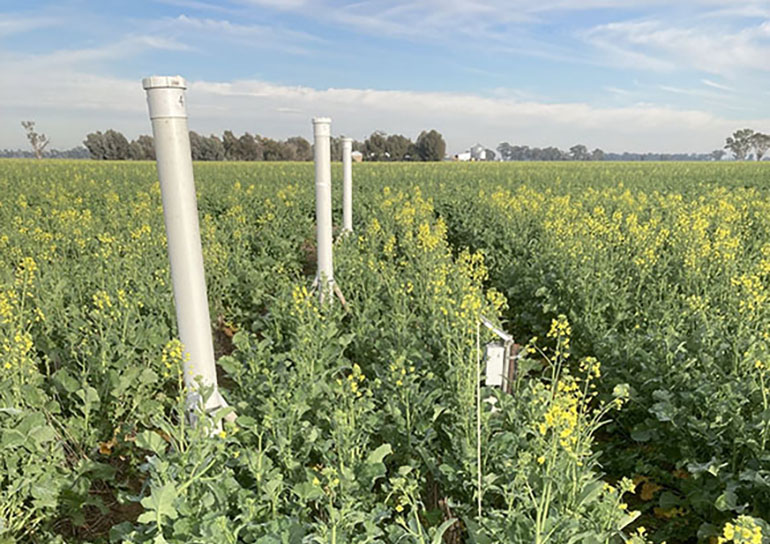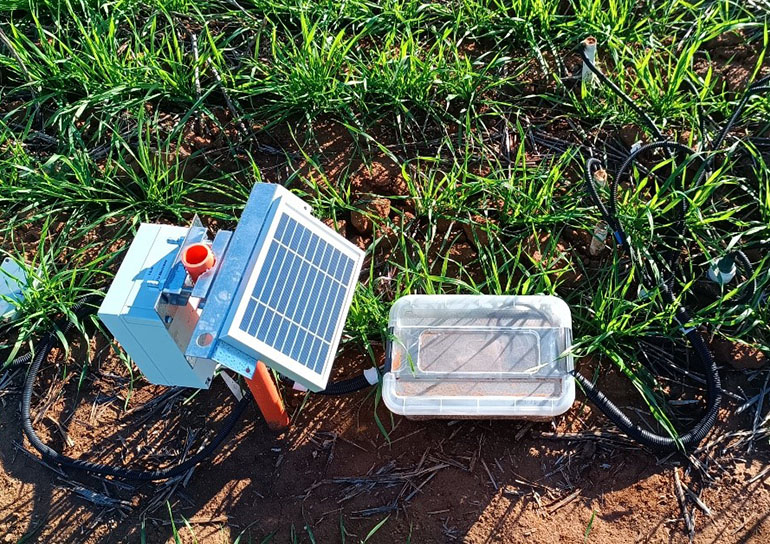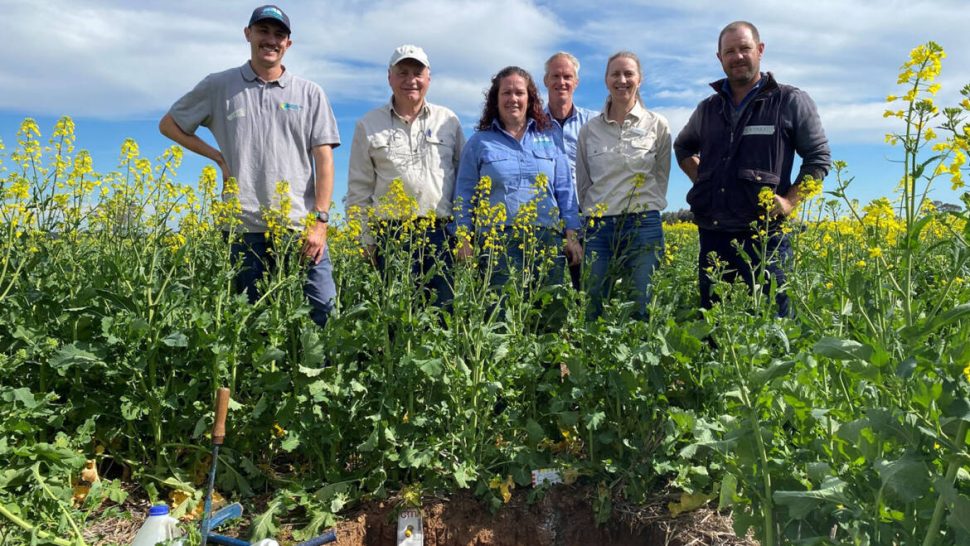Soil and plant processes influence soil water storage and a crop’s ability to access this water for growth. There are gaps in our knowledge of these processes, and in our ability to predict how changes in soil management affect soil water availability.
Enter the Soil CRC’s ‘Assessing soil water storage’ project (4.2.005), which aims to improve our understanding of crop access to water and quantify what, if any, soil amelioration is best suited to optimise crop productivity.
Dr Alice Melland, Soil CRC Project Leader and Senior Research Fellow at the University of Southern Queensland, said the research involves testing and applying field methods that quantify readily available soil water over time, in order to diagnose constraints to crop production in the soil-plant-atmosphere system. The methods are then also used to assess changes in readily available water due to applied treatments.
“The project team is carrying out continuous soil water dynamic monitoring at existing field sites where soil constraints are being addressed,” she said.
“This includes Soil CRC and GRDC field sites in Burramine, Victoria, and Armatree, NSW, and a Central West Farming Systems’ research station field site in Condobolin, NSW, all with contrasting soil types—Brown Sodosol, Red Sodosol and Grey Vertosol, respectively.”
The sites were selected to allow the study of medium to long term effects of treatments. The Burramine site, managed by Riverine Plains (and part of Soil CRC project 4.1.007), is investigating the impacts of cover crops, with summer fallow cover crops grown over four summers since 2019.
A University of New England research team manage the Armatree site, where lime/gypsum or elemental sulphur/organic matter blends were applied at depth in 2019. And at the Central West Farming Systems’ site, surface gypsum and lime were applied in a trial 36 years ago.


“We’re developing soil water characteristic models for each site and treatment using a novel field-based method. The method makes use of paired soil water and soil matric potential sensors” Dr Melland said.
“The soil water characteristic models tell us about the soil’s ability to store and transmit water at different rooting depths.”
Canopy temperature sensors were also installed at Burramine and Condobolin in 2024 to identify crop and atmosphere limitations to soil water use.
Field data collection will soon be finished at all three sites and water retention curve data are being successfully derived from the 144 moisture-matric field sensor pairs. The field-derived water retention curves are being compared with conventional laboratory methods.
Desktop modelling of plant available water capacity using digital soil map products has also been completed for Burramine and Armatree, with Condobolin to follow.
“Water retention curves were similar amongst field and lab methods tested for A horizon soil at Burramine,” Dr Melland said.
“We’re also seeing that in-situ paired soil water and matric potential sensors can offer not only water use information but causation information to help quantify the potential value of treating soil constraints.”
Results for the Burramine site indicate that the cumulative impacts of summer fallow cover cropping on plant available water capacity appear to be measurable.
“The novel field-based method to quantify the soil moisture characteristic curve warrants application in a wider range of soils and farming systems,” Dr Melland concluded.
With the project due to wrap up in early 2025, the data will be used to develop knowledge that ultimately supports growers to predict the likely impact of changes in soil management on access to plant available soil water, both now and in the future.
The project team is grateful to the host farmers at Burramine and Armatree for sharing their knowledge and for their collaboration.
Project participants
- University of Southern Queensland
- Federation University Australia
- NSW Department of Primary Industries and Regional Development
- Central West Farming Systems
- Riverine Plains Inc
- FarmLink
Image top: Soil CRC Burramine site collaborators including the host farmer and researchers from UniSQ, SCU, NSW DPIRD and Riverine Plains Inc. August 2024. Photo credit: Riverine Plains Inc.

